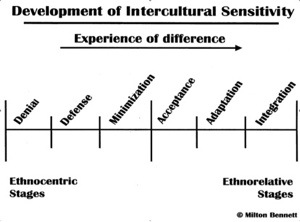In the intercultural field, we all know about “high-context” and “low-context cultures”, theories defined by anthropologist Edward T. Hall who helps us to understand which powerful effect culture has on routine communication. According to him, “in a high-context culture, many things are left unsaid, letting the culture explain. Words and word choice become very important in higher-context communication, since a few words can communicate a complex message very effectively to an in-group (…), while in a lower-context culture, the communicator needs to be much more explicit and the value of a single word is less important.”[1]
High-context cultures would include Asia, Africa, South America and much of the Middle East; low-context cultures are more or less found in North America and Western Europe.[2]
Applied to conflicts or simply “dealing with difference” it becomes very obvious how different the negotiation and mediation styles and skills have to be when addressing issues in one context versus the other. “High-context communication tends to be more indirect and more formal. Flowery language, humility, and elaborate apologies are typical.” Whereas in the low-context culture, “(…) people value logic, facts, and directness. Solving a problem means lining up the facts and evaluating one after another. Decisions are based on fact rather than intuition.”
Interestingly, very often even with people from the ‘same’ context, meaning Western Europe and North America for example (low-context), huge differences appear as to how conflicts and difficult situations are dealt with and managed. It becomes even more tricky, when the people around the table speak one language (English for example) but have in fact different mother tongues and own different passports (or residencies in different countries). Even though these people might be in a similar context, their “(…) communication style difference of intellectual and relational engagement provides a rich area for misinterpretation (…)” and their level of intercultural sensitivity, meaning “(…) the ability to experience cultural difference (…)” might also be a complete different one.[3]
An interesting study from 2008, entitled “Workplace conflict and how businesses can harness it to thrive” whereby workers attitude about conflict were analyzed questioning 5,000 full-time employees in nine countries around Europe and the Americas (Belgium, Brazil, Denmark, France, Germany, Ireland, the Netherlands, the United Kingdom and the United States), found out that conflict “(…) has a bounty of positive potential, which if harnessed correctly, can stimulate progress in ways harmony often cannot.”
Interesting thoughts indeed… It shows once again how intercultural competence, sensitivity and related skills are necessary in order to address the issues of the 21st century where people are more connected, mobile and dependent on each other than ever!





